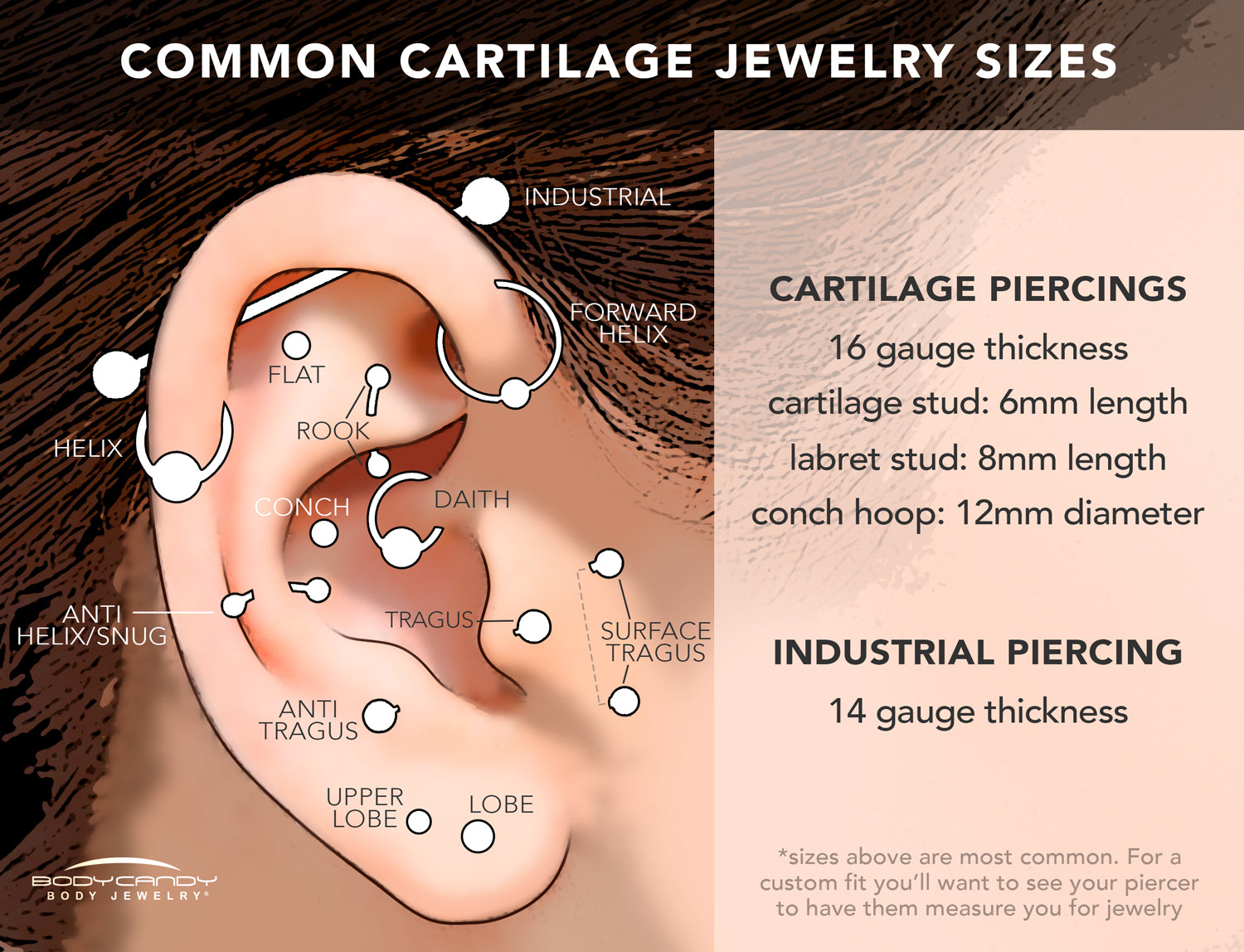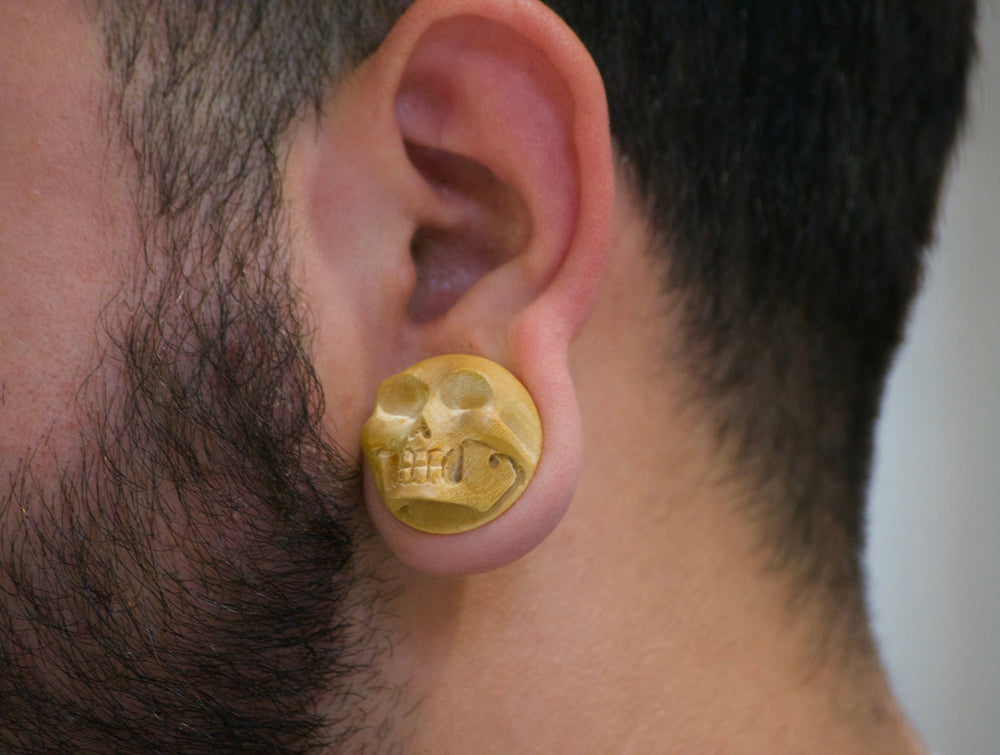One of the trickier parts of buying body jewelry is knowing what size to get. While there are “standard sizes” for jewelry, not everyone has a standard body. You may have unusually thick or thin skin (or cartilage) and need a slightly larger or smaller piece of jewelry for your piercing. Ideally the best way to figure out what size you need is to either consult a piercer or invest in a pair of digital jewelry calipers. These are inexpensive and can be a lifesaver when it comes to buying jewelry online. That said, we are going to discuss standard sizing for piercing jewelry and what that means for you.

Cartilage piercings (with the exception of industrial piercings) are generally 16 gauge. (Industrials are usually 14 gauge, which helps with stability.) That means that unless you and your piercer decided otherwise, your conch, or rook, or tragus, or daith, etc... is almost certainly 16 gauge. Cartilage studs (tiny barbells with the back end being a ball end) are usually 6mm which is generally a good size for a tragus, helix, or flat piercing. Conch piercings can be a bit trickier because the cartilage can be thicker there. If you have very thick cartilage in your conch, you may want to go with a labret flatback, which has a standard length of 8mm. A lot of people like to wear circular jewelry in their conch. This can be a bit tricky to size because the jewelry has to go all the way around the outside of the ear without squeezing too tightly. A 12mm ring is a good starter piece, as it is a mid-size ring which will allow you to figure out if you need a larger or smaller diameter piece.

Then there is the nose. A standard nostril piercing is usually 18 gauge. Some piercers like to go up a size to 16 gauge, very few will go down to 20 gauge. Again, if your piercing is a non-standard size, this is something your piercer should inform you about at the time you are pierced. A standard nose bone has a 6mm post, which should work for most people. If you happen to have limited space inside your nostrils, talk to your piercer about getting your jewelry replaced with flatback labrets in a slightly shorter length. (And please remember that nose bone jewelry is for healed and established nostril piercings only!) Standard nose hoops are 8mm in diameter which is a good in-between size for a proper fit on most people. If you like a slightly snugger fit, you may want to seek out some 6mm rings instead and if you want to go larger, 10mm may be your ideal. Septum piercings, on the other hand, are typically 16 gauge. (Piercers will also do 14 gauge) Septums vary pretty wildly in terms of thickness and required diameter. For example, with clicker jewelry the barbell portion is typically 8mm, but you may need a longer bar. This is one reason why horseshoe style jewelry is very popular because it is available in such a vast array of size – both gauge and diameter.

The lip is pretty simple, in that any horizontal piercing is nearly always 16 gauge. You may be pierced with longer than standard jewelry to accommodate swelling, but 8mm labret flatbacks are typically the norm. If you need shorter or longer jewelry, it’s very simple to just buy a threadless post and a separate end. The bonus of doing this is that you can swap the pieces out easily and use them in other piercings as you see fit.

Nipple jewelry is 14 gauge standard and the typical length of the jewelry is 14mm. Some people can be pierced with 12mm jewelry, but in order to accommodate swelling, piercers will often start out with longer-than-needed jewelry. Finally, nipple shields are best measured not by the barbell, but by the shield itself. Shields have two openings where the barbell slides through. This is the wearable length of the jewelry, and you will want to measure the area inside, between the two openings. If the space between is 14mm and you need jewelry that is 16mm long, it doesn’t actually matter how long the barbell is because the shield will not fit. You may also need to measure the opening of the shield vertically to make sure the jewelry fits around your nipple. That area is called the “rise”.
It is very helpful to take note of the size of the jewelry you’re being pierced with when you go get a new piercing. You can always go back to the piercer to get re-sized once you’ve completed the healing process or simply invest in some digital calipers for yourself. But now that you know the base measurements for standard piercing sizes, it should give you a good start from which to work. Happy piercing!






